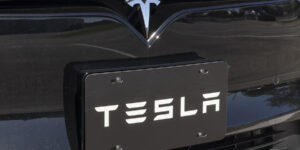Feeling the squeeze of an unprecedented hard market at a time when rate adequacy may be an ongoing challenge, throughout the fourth quarter of 2022, I met with personal auto insurance carriers across the country to discuss how to recharge personal auto profits with non-rate actions—solutions that don’t require a rate filing. This strategy has become popular in the current environment.

Four Factors Are Driving the Popularity of Non-Rate Actions
From our conversations, four trends emerged that are driving interest in recharging profits via the strategic sourcing of non-rate actions.
- Industry profitability challenges: Personal auto insurers’ average combined ratio exceeded 100 in 2021—indicating that the industry was unprofitable from an underwriting perspective for the first time since 2017[1]—and combined ratios continued to rise significantly in 2022.[2] From inflation to supply chain issues to riskier driving behavior, many complex factors are elevating loss costs and hammering industry profits. Verisk analysis shows pure premium exceeding pre-pandemic levels since the second quarter of 2021, with claim severity increases of more than 30 percent during 2022 compared to 2019 baselines.[3]
- States delaying or denying premium increases: Even as rate adequacy is an ongoing problem, some state insurance departments are pumping the brakes on rate approvals for new business.[4]
- Pandemic- and inflation-driven premium leakage: The pandemic has wreaked havoc on insurers’ auto book health: From “boomerang kids” moving home to wide swings in mileage without appropriate adjustments to rates, the pandemic and ensuing inflation have led to misaligned risks and premium leakage. Compounding the problem, many insurers paused or relaxed renewal underwriting programs during the lockdowns of 2020 and have yet to restart them.
- IT, UW, and customer service capacity: With information technology and underwriting resources focusing on other essential areas such as digital transformation and insurers tightening their belts on expenses including customer service, strategic sourcing of non-rate action initiatives is growing in popularity.
Best practices for non-rate action success
Through Verisk’s work with clients seeking to recapture missing premium, we’ve gained insights into common challenges:
- We continue to observe that up to 60 percent of vehicles have underreported mileage.[5] A best practice is to use validated mileage in renewal processes to get the correct rate for the risk.
- Household drivers not listed on policies remain a pain point for the industry. Employ undisclosed driver solutions at the point of quote, as well as in renewal underwriting processes, to identify household exposures that have changed over time. Verisk’s RISK:check Renewal solution has multisource solutions that identify potential exposures across all ages, not just youthful drivers. Most clients we work with assess renewal policies for “hidden” drivers at least once every three years.
- Lastly, garaging discrepancies continue to result in premium leakage, and may even lead to coverage issues. Many regional carriers were surprised to have auto exposure to Hurricane Ian when they don’t even write business in Florida. Innovations like GarageConfirm help pinpoint the physical location of the risk, and vehicle registration reports can be used at the point of quote and at renewal to validate a vehicle’s current registration state.
Benefits of strategic sourcing
Several large national carriers engage with Verisk to handle their renewal underwriting programs, selecting customizable solutions ranging from analytics related to specific sources of premium leakage to professional policyholder outreach. Here are a few of the reasons insurers choose strategic sourcing for these efforts:
- Ease: A high-quality non-rate action solutions provider can analyze your entire renewal book with minimal IT resources and recommend which risks to audit, plus provide turnkey execution.
- Prioritization: It isn’t always practical to audit 100 percent of a renewal book, so Verisk works with clients to select the top policies most likely to result in premium leakage recovery. Using analytics and estimates of recaptured dollars helps insurers prioritize pursuit and fine-tune renewal underwriting programs based on budget and return-on-investment goals, while also balancing retention considerations.
- Flexibility: Clients can select from a variety of premium leakage analytics to use for non-rate actions, even customizing specific solutions in select states; for instance, many clients start with a California mileage program. Once insurance leaders experience the value first-hand, they usually expand the program to include additional sources of premium leakage, as well as other states.
- Compliance: Strategic sourcing of non-rate action initiatives to a specialized vendor can help ensure compliance versus relying on an ad-hoc, in-house approach.
- Professionalism: High-quality outreach should include options for U.S. mail, customized websites, and inbound and outbound contact centers. The channels should be managed to match an insurer’s branding and tone with thorough processes to sign off on all consumer-facing assets. Using a specialized provider often results in better outcomes than repurposing the work of an in-house customer service team.
We recently engaged a top-10 insurer to address a significant mileage problem. Leadership wanted to quantify renewal-book premium leakage and recapture missing dollars fairly and quickly. Since executing the non-rate action program in-house would strain already maxed-out IT and underwriting teams, they decided on strategic sourcing to validate mileage in all 50 states and to tap into Verisk’s policyholder outreach services for the confirmation of mileage estimates with insureds via U.S. mail and a custom website. Within only six weeks, their validated mileage program was up and running.
Recharging profits during an ongoing hard market
Non-rate actions are one of the fastest ways to recharge profits during a hard personal auto market, while investing minimal resources from IT, underwriting, and customer service. Some Verisk clients have found these auto book health initiatives can generate an ROI of 7:1 in the first year and 22:1 over the life of a policy[6]—all while helping to avoid adverse selection and establish a more secure market position. It’s no wonder they are gaining in popularity.
Brad Magick, CPCU, leads the management of Verisk products for auto underwriting fraud, application and rate integrity, and book health. These products include Verisk’s RISK:check suite to help insurers mitigate fraud and confront premium leakage—a $29 billion annual problem for the industry. He oversees point-of-sale and renewal solutions, as well as advanced analytics that enable prioritized pursuit of premium recovery and policyholder outreach programs.
Sources
[1] AM Best Aggregates and Averages, 2017-2022
[2] The Triple-I Blog, “JIF 2022: Combined Ratio Takes Center Stage”, December 6, 2022
[3] ISO statistical plan data for bodily injury, property damage, and collision coverages combined, as well as for comprehensive coverages, 2019-Q2 2022
[4] AM Best Information Services, “California Commissioner Withholds Auto Insurance Rate Approvals, Rattles Market,” August 10, 2022 and The Orange County Register, “California Is Dangerous for Insurers, But Not Due to Fires and Floods,” January 31, 2023
[5] Verisk client experience
[6] Verisk client experience




















 Allstate’s Safe Driving App Helps Reduce Chance of Collision by 25%
Allstate’s Safe Driving App Helps Reduce Chance of Collision by 25%  Chubb Gets Its Paws on Pet Insurance MGA
Chubb Gets Its Paws on Pet Insurance MGA  E&S Property In Focus: Competition Up, Price Momentum Waning
E&S Property In Focus: Competition Up, Price Momentum Waning  The Latest Launches: Click for Cyber Insurance
The Latest Launches: Click for Cyber Insurance 